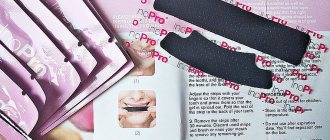What is so attractive about this product and why people buy it even though the process of its preparation is quite long.
How to clean a delicacy product before smoking and salting?
If you plan to smoke or salt the beef tongue, then it should be cleaned in a completely different way.
- First, we carefully clean the component, as before cooking. True, in this case, you can do without prolonged soaking.
- Now the product should be frozen, not to completely harden the fibers, but to freeze the upper protective layer. The component can be cleaned without this, but the process will be long and troublesome.
- We take an extremely sharp knife and cut the surface layer on the slightly hardened component. We pry up the skin and begin to unwind it, tearing it away from the base. It is necessary to work in a spiral, and not along or across. If you peel the skin like you peel an orange, it won't tear and you won't have to start all over again.
The workpiece can be sent for smoking and salting. The final dish will turn out tender and juicy if you choose the right recipe and act strictly according to its advice. But it is not recommended to stew such a product; in fact, it will not retain the necessary components, and the texture will not be pleasant. For this effect, it is better to use the product boiled in the usual way.
Read also: How to access iPhone via computer
Tags
Beef tongue beef tongue..beef tongue has raw tongue omit cleaning tongue resort beef tongue need cooking tongue necessary beef tongue place beef tongue helps If tongue bought Beef tongue clean beef tongue..that beef tongue boiled beef tongue this beef tongue cleaning beef tongue beef tongue after tongue g beef you need from beef tongue before cooking or after boiling or cook before boil during cooking you need to cook the tongue after cooking. before cooking or after cooking
saucechopped onion size
Preparatory stage
How to cook pork tongues and peel them?
Before cooking, the product must be washed and excess fat removed, because dishes made from it are already high in calories. Veins and other inedible parts should also be removed.
You should not peel the skin off the product in its raw form, because it is difficult to do and you may lose a certain amount of meat.
To get a truly delicious dish, you need to know:
- a fresh tongue is bright red;
- if the product is fresh, then it smells pleasant, a little sweet;
- Before cooking, it is necessary to soak the product for several hours.
Calorie content and chemical composition
Depending on the age and living conditions of the animal, the calorie content of boiled pig tongue is more than 200 kcal per 100 g of finished product, with approximately the same amount of fat and protein (16 g each). As for carbohydrates, they are either completely absent here or their amount does not exceed 1 g, making this delicacy suitable for use in various diets.
At the same time, with such nutritional value, its vitamin and mineral composition cannot be called poor, because among the useful components there are:
- vitamins - group B (B1–B3, B6, B9, B12), E, PP;
- microelements - iron, cobalt, manganese;
- macroelements - phosphorus, magnesium, potassium, sodium, calcium.
On average, one boiled pork tongue weighs about 300 g, so if you need to accurately calculate all the calories, it is recommended to proceed from this value.
How long will it take
If you want to surprise guests at a celebration, you need to learn all the intricacies so that you know how to cook and how to clean. Proper serving is also important, but more on that later. How long will it take for the tongue to be completely ready for use? It depends on its weight, size and age of the cow. Therefore, you will have to navigate the cooking process.
Determination by seasons
Depending on the time of year, a dream may have special meaning. Interpretation of night vision by season:
- Spring. Seeing in a dream means gossip and rumors from the outside. Dreaming of a man without a tongue means forced patience with the actions of his children. The sleeper sees himself without a tongue - to a fun time with friends.
- Summer. A tongue seen in a night vision is a warning to a scandal involving alcohol. Biting until it bleeds means spreading gossip about the sleeping person.
- Autumn. Such an image indicates the need for the dreamer to carefully select words when communicating with loved ones.
- Winter. Seeing it in wounds or sores means serious quarrels with your partner, which may result in separation with bad consequences.
The interpretations presented in dream books help determine the meaning of the dream. Most often, such an image speaks of the need to refrain from unnecessary conversations.
Other interpretations may indicate problems in various areas of human activity.
How to prepare offal for cooking?
The meat will turn out tender, juicy and aromatic only if it is properly pre-processed. Regardless of whether you plan to boil pork tongue or beef tongue, you need to take into account the following points:
- If you clean the component before cooking, there is a risk of ruining it beyond repair. Firstly, cleaning will take a lot of time, because... the skin will come off reluctantly. Secondly, a significant amount of the edible part will definitely be removed along with it. Finally, such a protective film retains moisture, making the dish juicy.
- But all excess meat and fat should be cut off. Their presence increases the calorie content of the broth, especially if it is pork tongue. Because of this, the dish turns out to be too rich and even greasy.
Gray, brown or green coating on the tongue
- A gray coating on the tongue often appears with ulcerative lesions of the intestines.
- A brown coating on the tongue appears from frequent smoking.
- A green coating on the tongue appears quite rarely with candidal glossitis, the causes of which may be decreased immunity or indiscriminate use of antibiotics.
Nutritionist's opinion
Today we looked at how to properly clean beef tongue. This will allow many housewives to decide what to serve as a snack. It costs less than sausage, and looks even more interesting. But despite the excellent taste of the delicacy and low fat content, it is not recommended to eat it too often and in large quantities.
The high content of a number of components creates an increased load on the kidneys. This restriction is especially important for older people.
Seasonings
Since by peeling boiled beef tongue we get a self-sufficient snack, we need to take care of the spices. To keep it tender, add salt just before it’s ready. You can check for softness with a fork and then put salt, pepper, and bay leaf into the water. You can also add carrots and onions to the broth.
But not all chefs agree with this procedure. Someone says that first you need to figure out how to clean boiled beef tongue. Only after this should it be lowered back into the broth, spices added and boiled for about 15 minutes. The resulting broth can be used to prepare aspic.
How to quickly clean a pork tongue?
Difficulties that inexperienced housewives may encounter may lie in improperly cleaning the tongue. But if you do everything correctly, then no difficulties will arise.
How to properly clean a pork tongue? To do this, you must follow some rules:
- Be sure to cook the delicacy, because it is impossible to clean the raw product.
- Be sure to cook it until cooked, i.e. at least 2 hours. If heat treatment is carried out for a shorter amount of time, it will be difficult to clean the tongue.
- The product must be cleaned immediately after cooking, when it is still hot. To avoid burning your hands, place your tongue in cold water.
- Cleaning should be done quickly while the product is still hot. As it cools, this will be difficult to do, and the tongue will have to be dipped into boiling water after a certain time.
How to clean a pork tongue? When the tongue is cooked, you need to remove it from the hot water with tongs or a fork and place it on a plate. To facilitate the process, the dishes can be placed under running cold water. You need to hold the tongue at its base with one hand, and gradually remove the skin with the other. Quickly pull the skin towards the tip of the product and direct water between the skin being torn off and the rest of the tongue. This should be done immediately after cooking, without waiting for the product to cool.
If you cannot easily peel the delicacy, this means that it is not ready yet. In this case, it is better to bring it to readiness.
When making a dish such as baked tongue, the skin should also be removed immediately after cooking, without waiting for cooling. These are the two main ways to clean a pork tongue.
Useful properties of the product
It contains many microelements and vitamins:
- sodium;
- potassium;
- magnesium;
- iron;
- calcium;
- copper;
- phosphorus;
- vitamins B and PP.
Due to the vitamin content, the product has a positive effect on the nervous system and helps the liver. The tongue contains so much iron and calcium that doctors recommend including it in the diet of pregnant women and children.
The product does not contain coarse fibers, so it is easily absorbed by the body and can be consumed by people who have problems with the digestive system. It can be safely included in the diet of those who are struggling with excess weight.
The delicacy is perfect for the holiday table, when you really want to pamper your friends and loved ones with delicious food.
Modern cleaning methods
Plaque can be removed in various ways. Doctors prefer toothbrushes. They are sold in any pharmacy or store. Their structure makes it possible to effectively remove plaque from the mucous membrane. In addition, you can use propolis, pharmaceutical products, antibacterial rinses and other approaches.
Toothbrushes
A universal method to remove plaque is to use a toothbrush. Any brush with soft bristles or with a special rubber surface on the back side is suitable for this. Their correct use prevents injury to the mucous membrane and allows you to effectively remove plaque from the tongue at home.
You can improve plaque removal by adding a small amount of toothpaste or non-abrasive tooth powder to your brush.
To prevent infectious processes on the mucous membranes, the oral cavity is rinsed with any antiseptic solution.
In this case, plaque can be removed using scrapers.
Step-by-step instructions on how to boil and peel pork tongue:
Prepare pork tongue (weighing about 300 g), carrots (0.5 pcs.), onions (1 pc.), bay leaf (1 pc.), black peppercorns (6 pcs.), cloves (3 pcs.), salt (0.75 tsp), water.
Wash the pork tongue thoroughly, clean the remaining dirt with a sharp knife, scrape off the coarse coating, and cut off the larynx.
We clean the carrots and onions. Cut the carrots into large pieces, cut the onion into 6-8 parts, without cutting all the way from the tail side. You need to stick a clove into the onion.
Place the prepared tongue in a small saucepan and fill it with cold boiled water so that it covers the tongue by 1 cm.
Add onions, carrots, bay leaves, and black peppercorns to the tongue. Place on the stove, bring to a boil over high heat under the lid, then reduce the heat to low and cook the tongue. After 30 minutes, salt the water and remove the bay leaf. We continue to cook the tongue.
After 1.5 hours, the pork tongue is ready! If the tongue is larger, the cooking time increases.
We take it out, check its readiness with a fork - the flowing juice should be clear, and the tongue itself should be soft. We clean it under cold running water - the skin comes off easily! You need to clean your tongue while it’s hot, immediately after cooking, and under running cold water! This is an important point at which the skin will be removed easily and almost effortlessly!
If you cannot clean the entire tongue under running water, use a knife to clean it on a cutting board, lightly scraping the skin.
We use the finished peeled tongue for its intended purpose - we serve it as a hot or cold meat appetizer, we use it to prepare salads, sandwiches and other dishes!
Fresh pork tongue has a uniform color when cut. The larger the tongue, the longer it will take to cook! In the same way, you can boil and peel beef and veal tongue.
Pork tongue is truly a delicacy. It is served as an independent cold appetizer, and is also included in various salads. If this product is prepared correctly, it will be soft, tender and have an incredible taste.
In the process of preparing such a dish, the question arises of how to properly clean the pork tongue, because it is necessary to do this not only quickly, but also in such a way that after removing the film, as much pulp as possible remains and it retains its aesthetic appearance. It should look very neat if the pork tongue is served as a separate dish.
Available means
Knowledge of whether it is necessary to clean the tongue and the correct use of plaque removal methods, in addition to special means, allows you to get rid of it at home. Available means are also suitable for this purpose: an ordinary teaspoon or a piece of gauze.
A teaspoon is used in a similar way to a scraper. It is pre-washed in warm water and treated with an antiseptic.
When using gauze, fold it into 2-3 layers and wrap it around two or three fingers. Thanks to its structure, gauze easily removes plaque without damaging the delicate mucous membrane.
Vegetable oil
You can clean your tongue using vegetable oils, such as olive or flaxseed. They allow you to remove plaque, reduce the severity of microtraumas on the mucous membrane, improve its condition, and also have an antibacterial effect. Cleansing is carried out in the morning on an empty stomach. One tablespoon of oil is taken into the mouth and mixed thoroughly in the oral cavity, making chewing movements. The duration of the procedure is 5-20 minutes.
The greatest effect of vegetable oil is achieved when it completely covers the mucous membrane. At the end of rinsing, the oil is spat out rather than swallowed. After cleaning the oral cavity, it contains microorganisms and food debris that should not enter subsequent parts of the gastrointestinal tract. The mouth is thoroughly rinsed with warm water to remove bacteria and food particles.
Baking soda works well. There are two methods to use it:
After using baking soda, you should rinse your mouth with plain water to completely remove it.
Medicinal herbs
Traditional medicine recommends the use of medicinal herbs. They are rich in biologically active substances. This means that they can be used to remove plaque from the surface of the tongue and eliminate bacterial microorganisms. For these purposes, different plants are used: sage, chamomile, oak bark, etc. A tincture is prepared from them, which is then diluted with water at the rate of 10-20 drops per 1 glass of liquid.
It is more effective to use solutions with medicinal herbs after the tongue has been mechanically cleaned with a toothbrush or scraper. In addition to their antibacterial activity, the herbs stimulate the healing of mucous membranes and reduce inflammation of the gums and palate.
Propolis
Propolis can act differently on the human body. Its antibacterial and anti-inflammatory effects are well known. Propolis is used in conjunction with other approaches, such as after brushing or scrubbing. It’s easy to remove plaque with its help - chew a small piece thoroughly for a few minutes. It is best to use propolis after a meal.
How to choose
If the product is not fresh or has been frozen and defrosted several times, then you are unlikely to be able to prepare a tasty and appetizing dish, so it is better to take the advice of experienced chefs so as not to make a mistake in your choice:
- the color of the tongue should be bright pink or purple, a pale pink shade is obtained after defrosting, and gray when the product begins to deteriorate;
- the smell should not cause unpleasant sensations. If a foreign aroma is felt, it means that the product was soaked with potassium permanganate or other additives;
- A clear liquid and drops of bright red blood should appear on a cut of a fresh product.
There is an easier way to determine the freshness of beef tongue - press the tongue with your finger. If the shape is restored within 10-15 seconds, then it is a fresh product. Otherwise, one should doubt its quality.
The benefits of the finished dish will depend on the amount of time spent on its preparation. The longer the tongue is cooked, the less nutrients remain.
The age of the animal can be determined by the weight and color of the offal: the tongue of a young calf weighs up to 1 kg, and an adult animal weighs 2-2.5 kg. A bright pink color indicates that the animal was still young, and a dark red color with a purple tint indicates that the animal is quite old.
The supermarket usually sells frozen food. To prevent it from losing its beneficial properties, defrosting is done gradually, avoiding temperature changes. The bottom shelf of the refrigerator or a bowl of cold water is suitable for these purposes.
Now you can start cleaning the offal.
Selection of quality raw materials
No cooking method can correct the quality and taste of a stale, stale product, especially one with a “smell.” All the beneficial properties of the tongue are inherent only in fresh, high-quality meat. This is a product without signs of weathering, without spots and color unusual for meat - this is what the tongue should look like. By the way, the spots may be from the color of the animal’s tongue, but they cannot be confused with rottenness and signs of spoilage of the product.
An adult animal will have a very large tongue, but this may also be an indicator of old age. It will take a long time to cook.
More nutrients are found in the meat of an adult, but not an old animal. Veal, pork and lamb tongues are inferior in their benefits to beef, but are an alternative substitute due to their greater availability in stores and due to their lower cost.
What can you cook with your tongue?
In addition to the traditional snack, it can be jellied meat or aspic, in which pieces of tongue and boiled carrots will act as filler. Choose a bouquet of seasonings that you like best, and the dish will turn out simply fantastic. In addition, boiled tongue serves as a component for more than ten delicious salads. It goes surprisingly well with mushrooms and prunes, and pickled vegetables. It can be salted or smoked, served with hot onions or sour cream sauce.
Any of these options will guarantee a great big hit with your guests. Get ready for housewives to ask how to clean boiled beef tongue. Despite the simplicity of the technology, not everyone knows how to do it correctly. But it’s so simple and doesn’t require special skills!
General information
The fact is that beef tongue has a large number of positive qualities and has a beneficial effect on human health, namely:
- It contains minerals and vitamins, as well as large quantities of zinc, iodine, potassium, phosphorus and iron. These substances help the body produce hormones and amino acids;
- Helps facilitate insulin production;
- Improves the process of tissue regeneration;
- Helps keep the skin elastic and helps slow down the aging process;
- Lowers cholesterol levels;
- It is a staple product for dieting and weight loss, as it contains a large amount of protein and a low proportion of fat.











